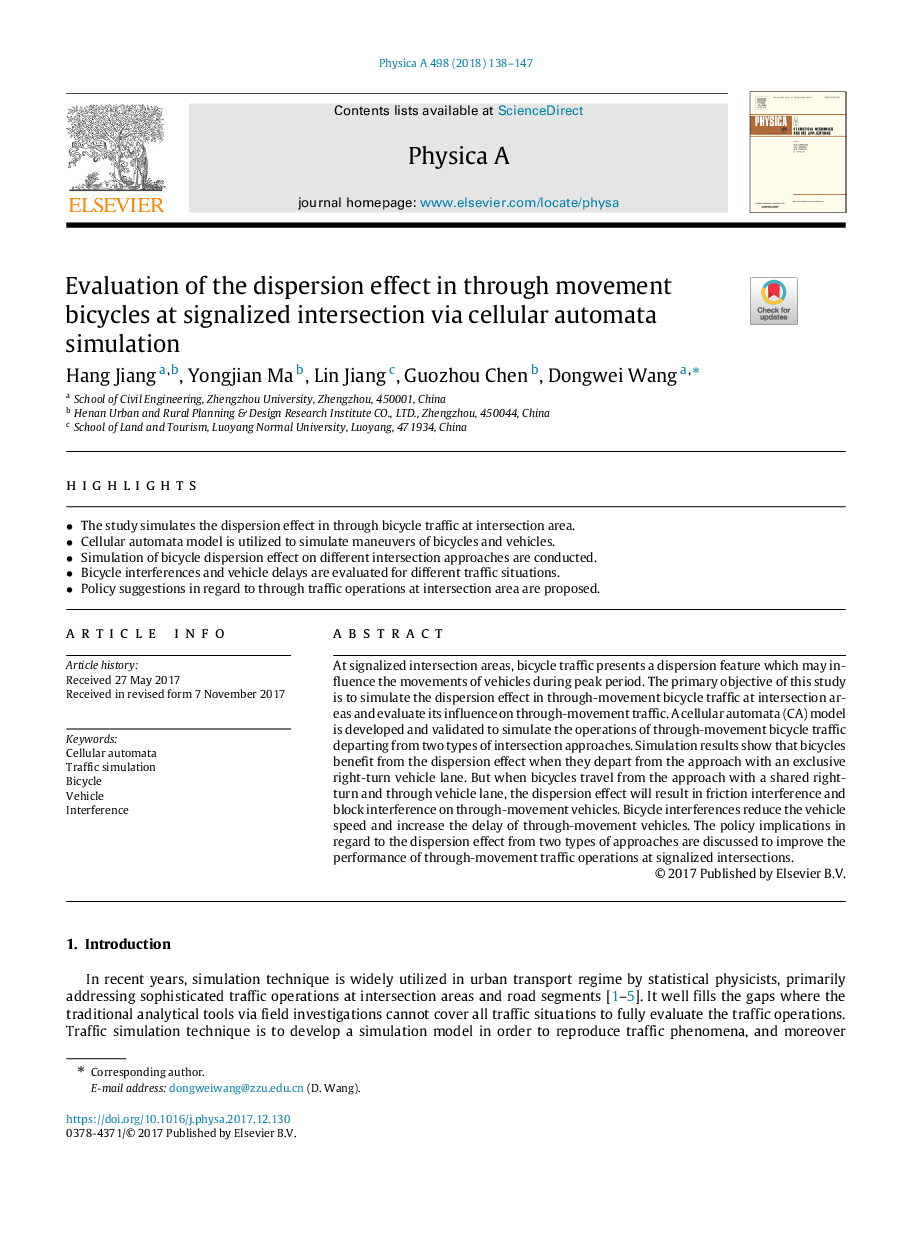| Article ID | Journal | Published Year | Pages | File Type |
|---|---|---|---|---|
| 7375776 | Physica A: Statistical Mechanics and its Applications | 2018 | 10 Pages |
Abstract
At signalized intersection areas, bicycle traffic presents a dispersion feature which may influence the movements of vehicles during peak period. The primary objective of this study is to simulate the dispersion effect in through-movement bicycle traffic at intersection areas and evaluate its influence on through-movement traffic. A cellular automata (CA) model is developed and validated to simulate the operations of through-movement bicycle traffic departing from two types of intersection approaches. Simulation results show that bicycles benefit from the dispersion effect when they depart from the approach with an exclusive right-turn vehicle lane. But when bicycles travel from the approach with a shared right-turn and through vehicle lane, the dispersion effect will result in friction interference and block interference on through-movement vehicles. Bicycle interferences reduce the vehicle speed and increase the delay of through-movement vehicles. The policy implications in regard to the dispersion effect from two types of approaches are discussed to improve the performance of through-movement traffic operations at signalized intersections.
Related Topics
Physical Sciences and Engineering
Mathematics
Mathematical Physics
Authors
Hang Jiang, Yongjian Ma, Lin Jiang, Guozhou Chen, Dongwei Wang,
